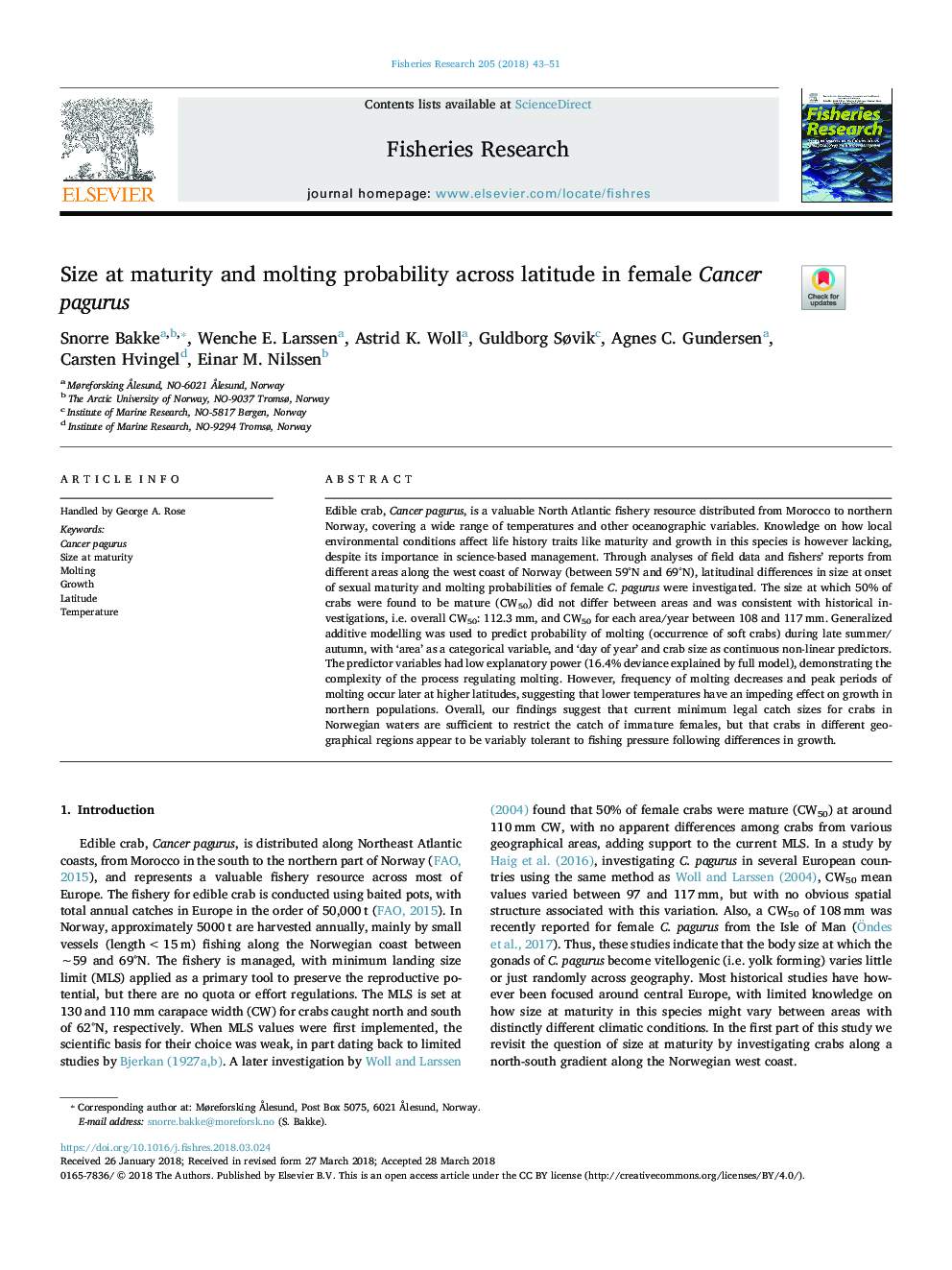| Article ID | Journal | Published Year | Pages | File Type |
|---|---|---|---|---|
| 8885318 | Fisheries Research | 2018 | 9 Pages |
Abstract
Edible crab, Cancer pagurus, is a valuable North Atlantic fishery resource distributed from Morocco to northern Norway, covering a wide range of temperatures and other oceanographic variables. Knowledge on how local environmental conditions affect life history traits like maturity and growth in this species is however lacking, despite its importance in science-based management. Through analyses of field data and fishers' reports from different areas along the west coast of Norway (between 59°N and 69°N), latitudinal differences in size at onset of sexual maturity and molting probabilities of female C. pagurus were investigated. The size at which 50% of crabs were found to be mature (CW50) did not differ between areas and was consistent with historical investigations, i.e. overall CW50: 112.3â¯mm, and CW50 for each area/year between 108 and 117â¯mm. Generalized additive modelling was used to predict probability of molting (occurrence of soft crabs) during late summer/autumn, with 'area' as a categorical variable, and 'day of year' and crab size as continuous non-linear predictors. The predictor variables had low explanatory power (16.4% deviance explained by full model), demonstrating the complexity of the process regulating molting. However, frequency of molting decreases and peak periods of molting occur later at higher latitudes, suggesting that lower temperatures have an impeding effect on growth in northern populations. Overall, our findings suggest that current minimum legal catch sizes for crabs in Norwegian waters are sufficient to restrict the catch of immature females, but that crabs in different geographical regions appear to be variably tolerant to fishing pressure following differences in growth.
Related Topics
Life Sciences
Agricultural and Biological Sciences
Aquatic Science
Authors
Snorre Bakke, Wenche E. Larssen, Astrid K. Woll, Guldborg Søvik, Agnes C. Gundersen, Carsten Hvingel, Einar M. Nilssen,
